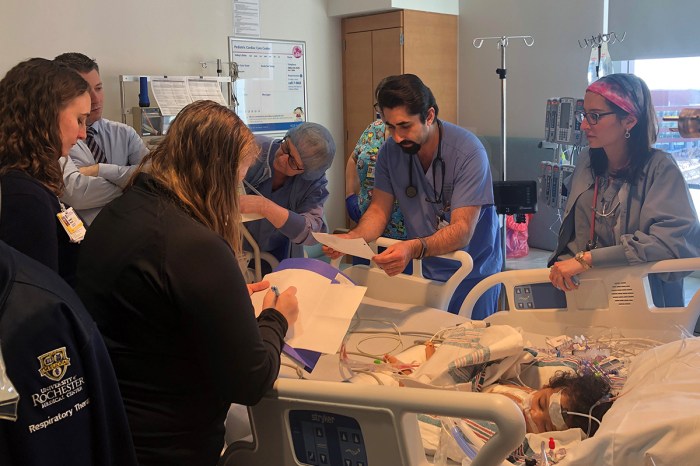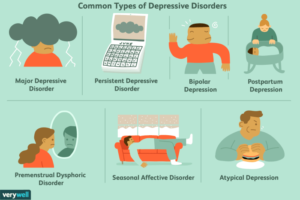
Pediatric critical care is like the superhero squad of the healthcare world, swooping in to save the day when our smallest warriors face the biggest battles. From tiny tots with asthma to little ones grappling with more complex conditions, this specialized care provides the ultimate support, ensuring that every child has a fighting chance to recover and thrive.
With a mix of high-tech gadgets and compassionate care, pediatric critical care units are equipped to handle a cornucopia of challenging medical situations. Their battle gear includes cutting-edge technology and innovative procedures that not only treat but also comfort these pint-sized patients, making their journey to recovery as smooth as possible.
Pediatric Critical Care Overview
Pediatric critical care is a specialized field that provides vital support to the youngest patients facing life-threatening conditions. This area of healthcare plays an essential role not only in saving lives but also in improving the quality of recovery for children. With the unique physiological differences in children, pediatric critical care units are equipped with specific knowledge and tools that are crucial for addressing their needs.The significance of pediatric critical care extends beyond mere treatment; it encompasses a holistic approach that includes emotional support for families during some of their most challenging times.
In these units, healthcare professionals tackle a range of serious conditions, from severe respiratory distress to complex cardiac anomalies. The environment is often dynamic and requires rapid responses to deteriorating situations, necessitating a multidisciplinary team approach.
Conditions Treated in Pediatric Critical Care Units
A variety of critical conditions require specialized pediatric care, which underscores the importance of these units in the healthcare system. Familiarity with the most commonly treated conditions can enhance awareness about the challenges and capabilities of pediatric critical care.
- Respiratory Failure: Conditions like asthma exacerbations and pneumonia can lead to critical situations where immediate intervention is necessary.
- Sepsis: A severe response to infection that can quickly escalate and necessitate intensive monitoring and treatment.
- Congenital Heart Defects: Many children are born with heart conditions that require complex surgical interventions and post-operative care.
- Neurological Emergencies: These include seizures, traumatic brain injuries, and other critical conditions affecting the nervous system.
- Trauma: Pediatric critical care units are often equipped to handle traumatic injuries from accidents, including those from sports or motor vehicle incidents.
Role of Technology and Innovation in Pediatric Critical Care
Technology and innovation are revolutionizing pediatric critical care, making it possible to provide more effective and efficient treatment options. The integration of cutting-edge tools and techniques is essential for monitoring and managing the delicate physiological systems of children. One example is the use of advanced imaging techniques, such as MRI and CT scans, which allow for a detailed assessment of complex conditions without subjecting young patients to invasive procedures.
Furthermore, innovations like telemedicine have expanded access to specialized care, ensuring that even those in remote areas can receive expert guidance in critical situations.Additionally, the implementation of electronic health records has streamlined communication among healthcare teams, facilitating timely decision-making. The use of wearable technology for continuous monitoring is also gaining traction, enabling real-time data collection that aids in the swift identification of any changes in a child’s condition.
The fusion of technology and compassionate care creates a safety net for our most vulnerable patients, reinforcing the idea that every second counts in pediatric critical care.
Associated Health Topics
In the realm of pediatric critical care, various associated health topics play a vital role in influencing patient outcomes. Understanding the interplay of conditions like asthma, autism, and childhood obesity not only informs treatment plans but also enhances the overall management of critically ill children. Let’s dive into these interconnected health topics that can significantly impact the delicate balance of pediatric critical care.
Impact of Asthma Management on Pediatric Critical Care Patients
Asthma management is crucial for pediatric patients, especially those in critical care, where even a slight wheeze can turn into a symphony of respiratory distress. Effective asthma control not only reduces hospital stays but also minimizes the use of intensive therapies. Key considerations include:
-
Regular monitoring
of lung function can catch the sneaky exacerbations before they make a scene.
-
Personalized medication plans
ensure that every child has their asthma under wraps, reducing the risk of acute exacerbations.
- Incorporating
environmental controls
, such as reducing allergens and irritants, can create a safer atmosphere for recovery.
- Education for families about recognizing early signs of an asthma attack equips them to act swiftly, possibly averting crises.
These strategies not only improve immediate outcomes but also contribute to long-term health, allowing our pint-sized patients to breathe easy and play hard.
Strategies for Addressing Autism in Critically Ill Children
Caring for a critically ill child with autism spectrum disorder (ASD) presents unique challenges, especially when traditional communication methods may not be effective. Tailoring approaches to meet their specific needs can lead to more effective treatment and care. Consider the following strategies:
-
Utilizing visual aids
, such as picture boards or communication apps, helps in bridging the gap during assessments and treatment.
-
Consistent routines
provide a sense of security, essential in the chaotic environment of critical care.
- Involving
family members
familiar with the child’s communication style can enhance understanding and compliance with treatment.
-
Creating a calming environment
through sensory-friendly adaptations can prevent overstimulation and improve cooperation.
By acknowledging and adapting to the unique needs of these children, healthcare providers can foster a more compassionate and effective critical care experience.
Implications of Childhood Obesity Prevention in Critical Care Settings
Childhood obesity is a significant concern that can complicate critical care scenarios, as it increases the risk for a multitude of health complications. Preventing obesity in this vulnerable population is essential, as it can lead to better outcomes and decreased healthcare costs. Some implications include:
-
Early identification
of children at risk for obesity can inform preventative strategies, such as dietary counseling and physical activity encouragement.
-
Implementing multidisciplinary teams
that include dietitians, physical therapists, and psychologists ensures a holistic approach to managing weight and overall health.
-
Education on healthy habits
for both patients and families fosters a culture of wellness that extends beyond the hospital walls.
- Regular assessments of
body mass index (BMI)
and other health metrics can guide individualized interventions and track progress.
Addressing childhood obesity in critical care settings is not just about managing weight; it’s about setting the stage for healthier futures for our children.
Procedures and Protocols in Pediatric Critical Care

In the high-stakes world of pediatric critical care, medical teams often find themselves transforming into superheroes, equipped with not just capes, but also an arsenal of procedures and protocols that keep our littlest patients safe and sound. These protocols are not just the icing on the cake; they are the essential ingredients that help treat and manage critically ill children while keeping their families in the loop, lessening the anxiety of parents and caregivers who are navigating these tumultuous waters.One of the cornerstones of pediatric critical care is the array of procedures that are performed with precision and care.
Below is a list of common procedures that help manage critical conditions in children, showcasing the blend of science, skill, and a dash of humor that practitioners bring to the bedside.
Common Procedures Performed in Pediatric Critical Care
These procedures are vital for diagnosing and treating various conditions in young patients. They are performed with the utmost care, minimizing discomfort and maximizing effectiveness.
- Endotracheal intubation: Inserting a tube into the windpipe to assist breathing; think of it as giving a child the “superpower” of oxygen.
- Central line placement: A more permanent IV solution crucial for delivering medications; it’s like setting up a direct hotline to happiness (or, at least, to the medicine).
- Chest tube insertion: Used to remove fluid or air from the chest cavity; it’s like giving the lungs some breathing room during a tough time.
- Cardiac monitoring: Keeping tabs on the heart’s rhythm—because every superhero needs a sidekick watching their vitals!
- Lumbar puncture: Also known as a spinal tap; it’s used to collect cerebrospinal fluid, and yes, it sounds scarier than it is!
Pain management in critically ill children is another vital aspect of pediatric critical care. The protocols established are designed to provide maximum comfort while minimizing risk, all while giving parents peace of mind.
Protocols for Pain Management in Critically Ill Children
Pain management protocols are paramount in ensuring that children receive compassionate care. These protocols are often tailored to the unique needs of each child, taking into account age, condition, and sensitivity to pain.
Effective pain management is not just about alleviating discomfort; it’s about enhancing the healing journey.
The pain management protocols typically involve a combination of pharmacological and non-pharmacological interventions:
- Use of analgesics: Pain relief options such as acetaminophen or opioids are prescribed based on the child’s condition and level of discomfort.
- Assessment tools: Tools like the FLACC scale (Face, Legs, Activity, Cry, Consolability) help in assessing pain levels in non-verbal children.
- Non-pharmacological methods: Techniques such as guided imagery, music therapy, and distraction techniques (like a good superhero movie!) can significantly help.
- Family involvement: Educating and involving families in the pain management process empowers them, creating a supportive environment.
Family-centered care is a hallmark of pediatric critical units, ensuring that loved ones are part of the healing process, because let’s face it—children are superheroes, but their families are the ones with the real superpowers in providing support.
Approaches for Family-Centered Care in Pediatric Critical Units
Family-centered care in pediatric critical units focuses on the collaboration between healthcare teams, patients, and their families. This approach enhances the overall experience for everyone involved and promotes better health outcomes.
In pediatric critical care, families are not just visitors; they are integral members of the care team.
Here are some key approaches that embody this philosophy:
- Open visitation policies: Allowing family members to visit at any time helps maintain emotional support and comfort for the child.
- Family education: Providing resources and knowledge about conditions and treatments encourages families to participate in care decisions.
- Involvement in care: Families are encouraged to participate in caregiving tasks, which helps them feel more empowered and connected.
- Regular family meetings: Frequent discussions with healthcare staff about the child’s care plans ensure everyone is on the same page and fosters trust.
- Emotional support services: Access to social workers, chaplains, and support groups aids families in coping with the stress of a critical illness.
Closure

In the end, pediatric critical care is not just about machines and medications; it’s about teamwork, hope, and the unyielding spirit of families and healthcare professionals alike. As we continue to evolve our approaches and enhance our technologies, we ensure that every child has the opportunity to shine bright again, proving that even in the darkest times, there’s a spark of resilience just waiting to ignite.
Commonly Asked Questions
What types of conditions are treated in pediatric critical care?
Pediatric critical care treats a variety of conditions including respiratory distress, severe infections, congenital heart defects, and trauma.
How do healthcare providers support families in critical care?
They provide family-centered care, ensuring that families are involved in decision-making and offering emotional support throughout the child’s treatment.
What role does technology play in pediatric critical care?
Technology enhances monitoring, diagnosis, and treatment, making procedures safer and more effective for young patients.
How is pain managed for critically ill children?
Pain management is approached with tailored protocols using medications and alternative therapies to ensure comfort for each child.
What strategies are used to address autism in critically ill children?
Strategies include individualized care plans that cater to sensory needs, communication preferences, and the involvement of specialists.





